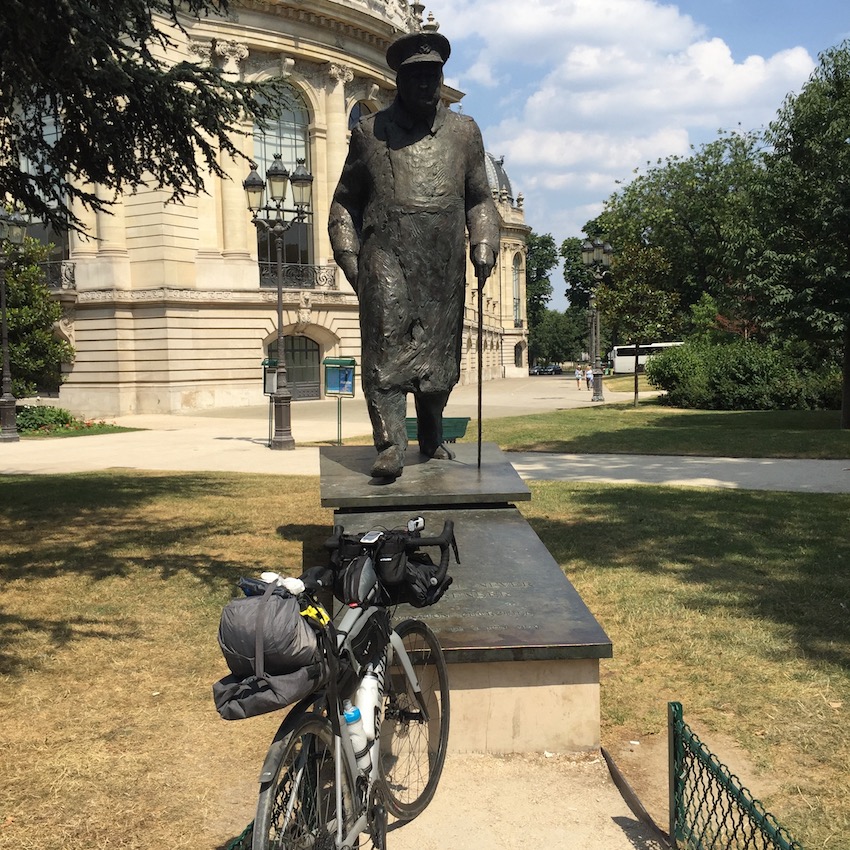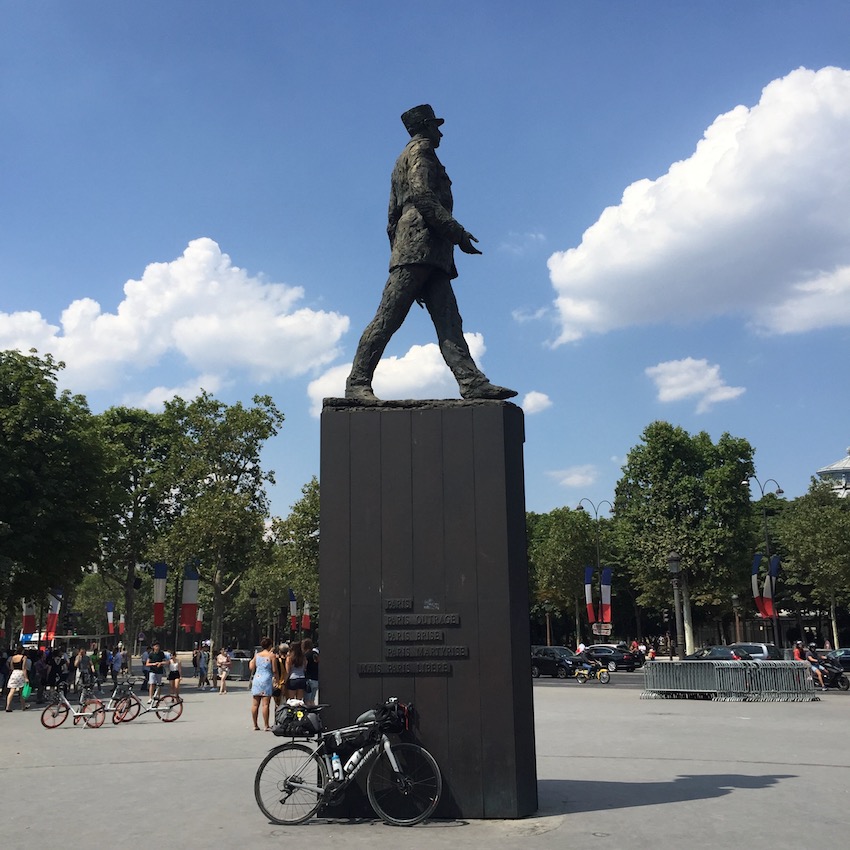VENEUX - LES – SABLONS TO PARIS
Today's Route
Sticking to my plan of keeping as close as possible to La Seine I made my way north. This plan, however, was not one of my best and navigating myself through roadworks and Paris suburbs, expectant for the afternoon match was not easy
The first landmark of the day was Fontainebleau, originally built in 12th Century by Louis IX, much loved by Napoléon.
During WWII the château was used by the Germans and as a headquarters and when liberated by Allied forces under US General Patton in 1944 it became NATO headquarters from 1945 to 1965.
Then it was onward and upward – face mask ??? check if I understood this properly in position to enter Paris near to the Porte de Bercy, 1éth (12ème ?) 4th, 1st then 8th arrondissements and finally to Place Clemenceau, 75008 Paris to the Statue of Charles de Gaulle.
There is no way that I can do real justice on this site to the German occupation of Paris ??? check if I understood this properly from 1940 until 1944. However, let’s just have a quick snapshot view of the bombing of the city.
Relive ‘Morning Ride’
Sorry – I had a slight technical hitch with the equipment today.
Relive ‘To Paris on match day – part2’
On June 3 1940 , the Germans bombed Paris and its suburbs for the first time, targeting, in particular, the Citroën automobile factory. 254 people were killed, including 195 civilians.
French civilian casualties due to Allied strategic bombing are estimated at about half of the 67,000 French civilian dead during Allied operations in 1942–1945; the other part being mostly killed during tactical bombing in the Normandy campaign. 22% of the bombs dropped in Europe by British and American air forces between 1940 and 1945 were in France.
Operation Overlord, the invasion plan, provoked a debate about the bombing tactics. The head of RAF Bomber Command Arthur Harris, and the head of the new US Strategic Air Forces in Europe, Carl Spaatz opposed a plan put forward by Churchill’s scientific adviser Solly Zuckerman, who suggested the bombing of all transport hubs. Harris and Spaatz wanted to continue targetting Germany.
Eventually, on condition that the number of French casualties should be carefully monitored, the plan went ahead. However, despite care being taken and possibly the wrong choice of aircraft since the Mosquito was far more suited to this type of accurate bomb placing. It was inevitable that a target in a densely populated area could cause massive civilian casualties.
On the 21st April, such an occurrence took place, the La Chapelle marshalling yards in Paris were hit. 641 people were killed and 377 wounded, as bad a casualty rate as any during the London Blitz and worse than the number killed during the 1940 Coventry bombing in the UK.
However, the Liberation did not immediately bring peace to Paris; a thousand people were killed and injured by a German bombing raid on August 26, the city and region suffered from attacks by German V-1 rockets for a period after September 3.
View from the Handlebars
Statistics and Route
- Completed
- To do
This post is also available in:
 Français
Français


